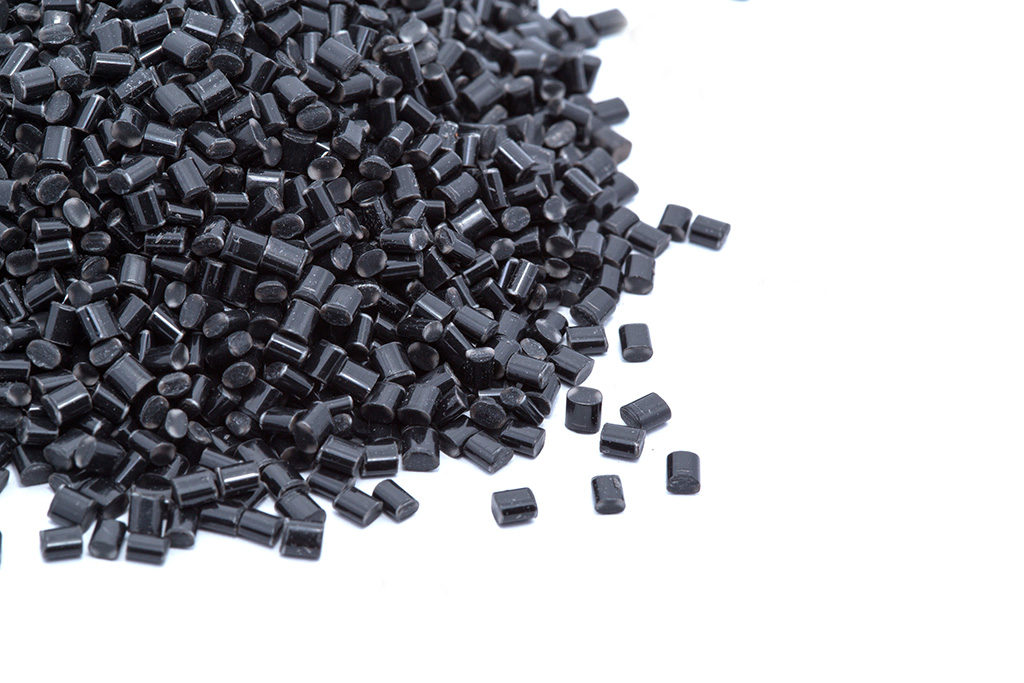Plastic Materials

Material is a very important design consideration. It may come as a surprise to find out that there is more than one type of plastic – and for each type of plastic there are many grades and additives that affect the materials properties.
Plastics are often considered because they are relatively inexpensive to process, which usually results in a cost advantage over other materials – when part runs are high. However, in many cases the material properties offered by plastics have advantages over other materials. Some areas or applications where plastics should be considered are:
- When the part will be in contact with harsh chemicals
- Where high strength to weight ratio is required
- If electrical insulation is required
- If a low friction, wear surface is required
- When low material hardness is an advantage (for example if you don’t want to scratch or damage other materials that come into contact with the plastic part)
- In food and medical applications
Many fillers and additives are available to enhance the performance of plastics. Some examples are:
- To improve high or low temperature performance
- To provide flame resistance
- To provide UV resistance
- To increase strength and stiffness
A list of some common plastics and a short description of the material is given below:
Polypropylene (PP): a common and inexpensive plastic with excellent chemical resistance. This material is soft and flexible. Certain grades of polypropylene are FDA approved for use in food and medical applications and is a common material used in food containers. Polypropylene is hydrophobic and has a low surface energy. As a result, this material does not absorb water and most adhesives will not stick to it.
Polyethylene (PE): low density PE (LDPE) is a common and inexpensive plastic that is very similar to PP. PE can be modified to increase its stiffness and improve its, strength, stiffness, wear resistance and lower its coefficient of friction. This modified PE is known as High Density PE or HDPE. Another form of PE with further improvements to these properties is known as Ultra High Molecular Weight PE or UHMW-PE. However, UHMW-PE cannot be processed using injection molding. PEX is a form of cross-linked polyethylene that has widely replaced copper water lines for domestic use.
Acrylonitrile Butadiene Styrene (ABS): offers good strength, toughness and impact resistance. ABS is commonly used in toys, auto parts and electronic housings. ABS is a popular material where flame resistance is a requirement. Certain grades are designed to meet UL flammability requirements.
Polyvinyl Chloride (PVC): can be formulated to have a variety of mechanical properties from soft and flexible to stiff and strong. PVC has good chemical resistance and is widely used for drainage pipes and plumbing. It is a common material used for wire and cable insulation and has good flame retardancy. PVC is often referred to as vinyl. For example, vinyl housing siding is in fact PVC.
Polyamid (PA) or Nylon: is the strongest commodity plastic. When reinforced with glass fibers it can often be used as a metal replacement due to the high strength and stiffness that results. Nylon is very hygroscopic and absorbs a relatively large amount of water which results in dimensional instability. Nylon is a popular choice for gears due its strength and wear properties.
Polymethyl methacrylate (PMMA) or Acrylic: has the highest light transmissivity of any plastic and is often used to make windows, screens or lenses. PMMA has high resistance to UV light and weathering but is susceptible to crazing if exposed to certain chemicals.
Polycarbonate (PC): has very high impact resistance and is used to make bullet-proof glass. PC also has high light transmission and can be considered as an alternate to PMMA. PC offers better chemical resistance than PMMA but is more susceptible to scratches.
Thermoplastic Elastomers (TPEs): have high elasticity. TPEs are typically formulated by blending a conventional elastomer (such as EPDM or Nitrile) with a thermoplastic (such as PP). TPEs can be processed by injection molding and recycled.
The plastics mentioned are examples of some common plastics. In some applications more exotic plastics should be considered to provide properties such as resistance to extreme temperatures, low friction and high lubricity to name a few.
In addition to the properties mentioned here there are many new and exciting applications for plastics such as in fuel cells and batteries.